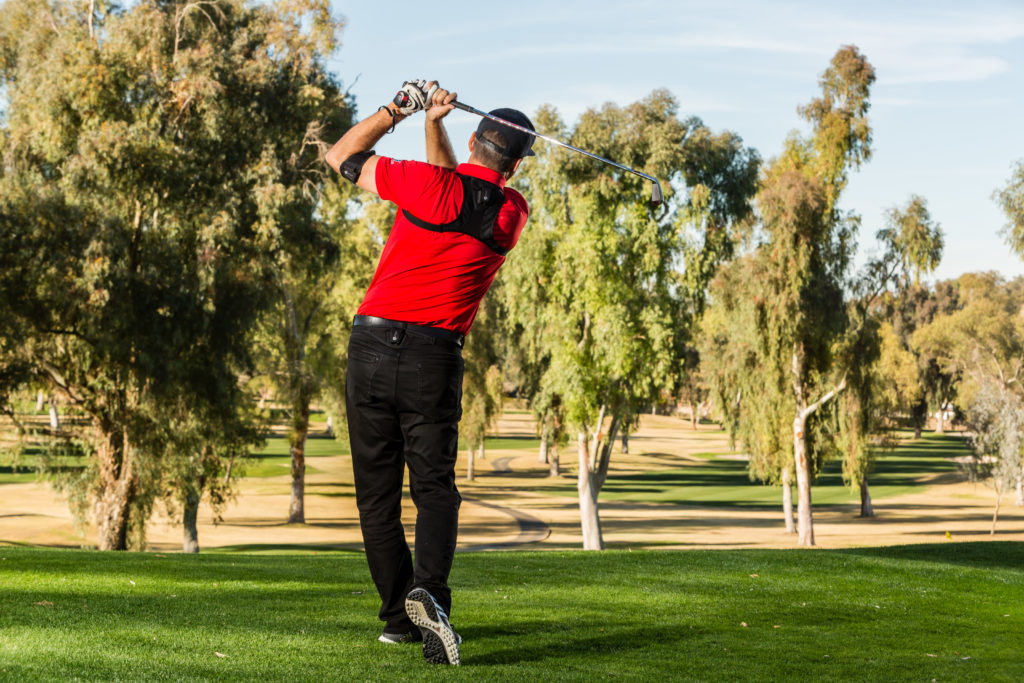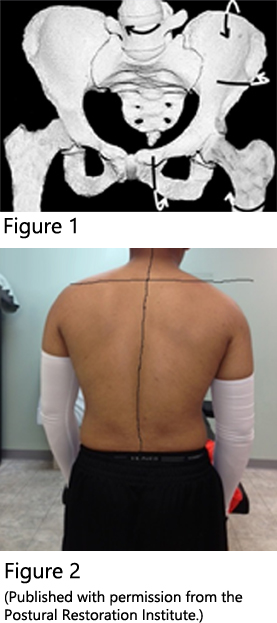by Chris Poulin
Why Golf is More Difficult for Right-handers
One of the most epidemic movement dysfunctions in golf is the inability of right-handed players to rotate around their lead hip. The lack of proper left hip position can lead to blocks, pulls, over the top, and a propensity of low back pain. With this in mind, what follows is some important context and practical solutions geared to the right-handed golfer—and unfortunately for left-handed players, addressing these issues is not as easy as simply reversing everything.
Over 92% of the world is right hand dominate, and an even greater number of left hand dominate players like Henrik Stenson are left-handed yet play golf right-handed. Throughout my years of studying the teachings of Ron Hruska of the Postural Restoration Institute (PRI), I have come to a realization regarding why most right-handed players find the game harder than their left-handed counterparts. Through my work with PRI I have a greater appreciation of how handedness, breathing, eye dominance, and malocclusions all affect how we swing a golf club.
The right-handed patterned golfers have a tendency to rely on their right side more than their left to do things such as lining up a drive, reading a putt, picking a ball out of the hole, teeing a ball up, and simply waiting for another player to hit or swing the club. This habit of using your right side while neglecting your left makes you asymmetrical. It’s that simple. Sprinkle on top of that the thousands of times right-handed golfers turn their shoulders to the right to make a backswing, and it becomes predictable that their bodies will take on a new form.
Assessments and Data Analysis
In the clinical setting right-handers will typically demonstrate that their pelvis is tipped forward on the left side, and this is the start of what is driving them to bear weight more on their right side (see Figure 1). They will have muscles in their abdomen and hips adapt to the new position, and then make adjustments in the thorax to compensate. When this happens the right shoulder will usually tip forward and they excessively side bend to the right, and stay side bent throughout their swing. As you can see in the young golfer in Figure 2, the spine becomes twisted and the right side of the neck has increased demands placed upon it.
When performing our assessment of golfers they will demonstrate more pelvis rotation in the backswing to the right and very little pelvic rotation to the left at impact. They will struggle balancing on their left leg compared to the right, and show a flat shoulder plane in the backswing because of the over-dominate right abdominals. We use K-VEST to capture this data to offer the objective numbers that help guide our corrective program. The K-VEST data that is typical of this program is seen below.

When assessing the video analysis, we use a down-the-line view that will show the pelvis has moved toward the golf ball at impact relative to where it was at address. This swing characteristic is called “early extension” and is often coupled with increased flexion of the lead knee as seen below.
Ideally, we would like to see the hips still on the line drawn behind the body and the left knee generally straight. The following exercises are designed to correct the physical limitations that are the possible cause for this swing fault. They represent some practical corrective steps you can take to reposition, restore, and, finally, retrain.
Exercise 1: Reposition
Golfers with a forward pelvis are more likely to injure their backs and lose distance. The following program will help most golfers who struggle with low back pain and are the short hitters in their group. It is not by any means a comprehensive program, and please perform these exercises only after obtaining permission from your physician.
Directions:
- Lie on your back with your feet flat on a wall and your knees
- Place a 4-8 pound weight in your right hand and straighten your right arm towards the ceiling.
- Inhale through your nose and, as you exhale through your mouth, perform a pelvic tilt so that your tailbone is raised slightly off the mat. Keep your back flat on the mat. Do not press your feet flat into the wall; instead, dig down with your heels.
- Shift your left knee down or your right knee up so that your left knee is slightly below your right knee.
- Rotate your right thigh out against the band. You should feel the muscles on your right outside hip (buttock) engage.
- Inhale through your nose and, as you exhale through your mouth, reach your right hand up toward the ceiling as you rotate your palm so it is facing toward your feet.
- Inhale through your nose as you maintain the reach with your right arm. You should feel the muscles underneath your right shoulder blade engage. Exhale through your mouth and reach farther.
- Repeat this breathing sequence for 4-5 deep breaths—in through your nose and out through your mouth.
- Relax and repeat four more times.
Exercise 2: Restore
It is imperative to restore normal function of the left hip after repositioning it to its neutral position. Your body will likely find this extremely challenging. The purpose of this exercise is to train the inner thigh and outside hip to properly stabilize the pelvis as your hip rotates over a stable leg.
Directions:
- Lie on your right side with your right hip and knee bent at a 90-degree angle
- Keep your left hip neutral and place your left knee on a bolster so that it is below the level of your left hip.
- Place your right arm or a pillow under your head, and keep your back and neck relaxed.
- Press your left knee down, and raise your left foot towards the ceiling; you should feel your left outer hip engage.
- Slowly lower and raise your left lower leg ten times while keeping your left outer hip (buttock) muscle engaged.
- Relax and repeat two more times.
Exercise 3: Retrain
Once your body is in the proper position and you’re aware of how to properly activate the muscles needed to incorporate an efficient golf swing, it is time to train. If you’re using a K-VEST to perform the exercise below, you want pelvis 5 degrees of anterior tilt (sagittal plane), 7 degrees of sidebend (frontal plane) and 20 degrees of rotation (transverse plane). [insert attached Poulin photo around here somewhere—I believe it should be associated only with this third exercise. -PG]
Directions:
- Stand facing a table, desk or a counter top.
- Place a two-inch block underneath your left foot.
- Place your right foot on the ground ahead of your left.
- Round out your back and place forearms on the surface.
- Shift your left hip back so that your pant zipper is towards your left big toe. You should feel a stretch in your left outer hip (buttock). The majority of your weight should be on your left leg, through your left mid-foot/heel.
- Keeping your left hip back, inhale through your nose as you slightly squat by bending both knees.
- Exhale through your mouth as you push through your left mid-foot/heel and straighten both knees. You should feel the muscles on the front of your left thigh and left outer hip (buttock) engage.
- Repeat this breathing sequence for a total of 4-5 deep breaths, in through your nose and out through your mouth, slightly squatting with each inhalation and returning to the starting position on exhalation
- Relax and repeat four more times.
Chris Poulin is a certified athletic trainer and strength and conditioning specialist with over 20 years experience. He maintains certifications with the NSCA, PRI, NATA, NASM and TPI; he is also a member of the first class of certified athletic trainers to be recognized by the Postural Restoration Institute and earning the PRT credential. A co-owner of Sandhills Sports Performance in Southern Pines North Carolina, he specializes in athletic development and reconditioning.
Link: www.sandhillssp.com

